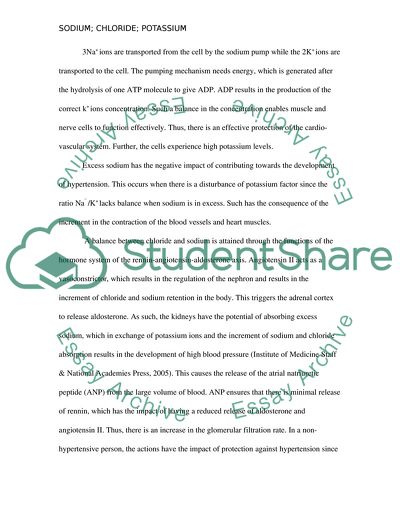Sodium; Chloride; Potassium Essay Example | Topics and Well Written Essays - 500 words. https://studentshare.org/medical-science/1841462-sodium-chloride-potassium
Sodium; Chloride; Potassium Essay Example | Topics and Well Written Essays - 500 Words. https://studentshare.org/medical-science/1841462-sodium-chloride-potassium.


